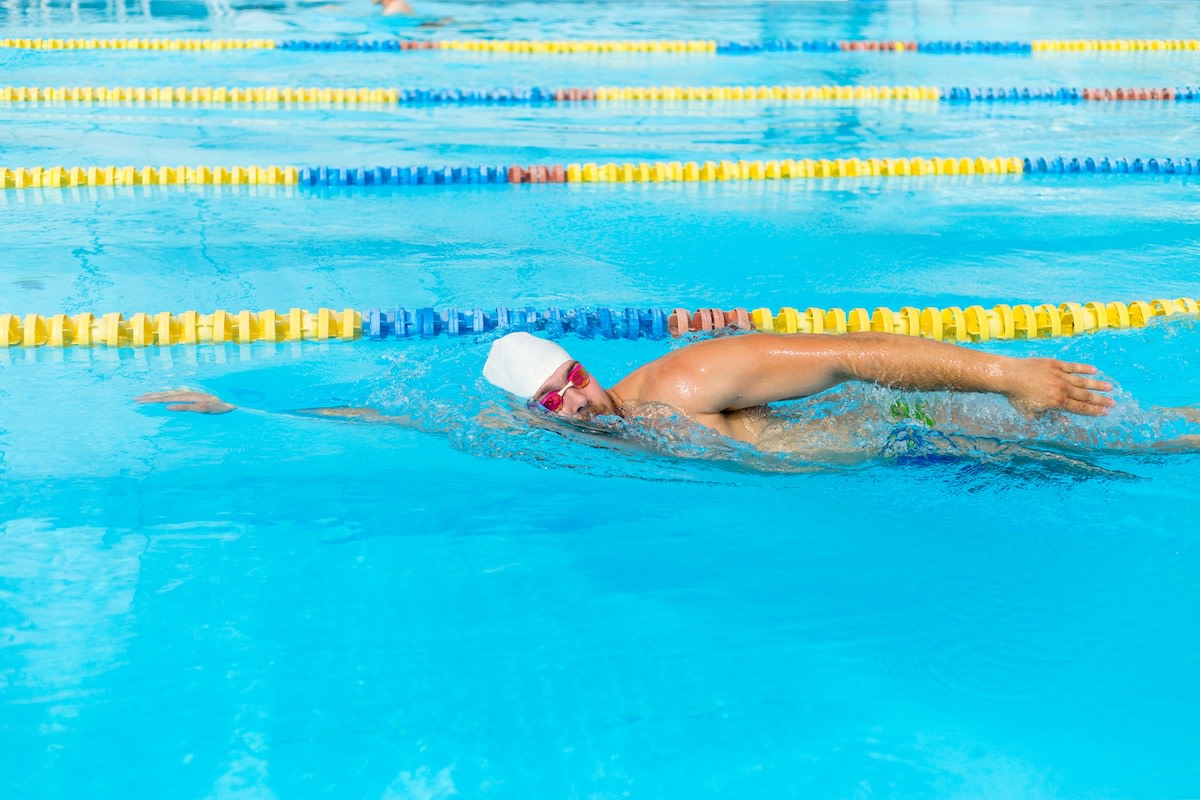How to Swim the Sidestroke: 3 Tips
Written by MasterClass
Last updated: Oct 18, 2021 • 3 min read
The sidestroke is an efficient swimming technique that is valuable to any swimmer’s practice.
Learn From the Best
What Is the Sidestroke?
Sidestroke is a swimming stroke swimmers perform on their side. Unlike other strokes, such as the freestyle crawl, backstroke, breaststroke, and butterfly stroke, the sidestroke is not competitive. Instead, it is most often used to conserve energy in long-distance swimming or in emergency situations.
How to Swim Sidestroke
Learning how to swim sidestroke is relatively straightforward, although it does require some practice to get the most out of the technique. As with learning any swimming stroke, it’s best to take the different parts of the stroke one at a time:
- Body position: When swimming sidestroke, as the name suggests, your body is on its side. The sidestroke uses one side of the upper body at a time, while the other side is able to get a degree of rest.
- Arm movements. The arm movements of sidestroke are asymmetrical, allowing the body to conserve energy since only one arm at a time is doing most of the work. If you’re facing left in the water, your left arm will be on top. If facing right, your right arm will be the upper arm. At the start, whichever arm is on top will be pointed backward, while the lower arm will be pointed forward. The bottom arm will pull down through the water, the top arm will move towards the chest. Both hands meet, and then the top arm will pull sideways towards the waist as the bottom arm reaches forward in recovery.
- Leg movements. In the sidestroke, the legs perform a repeated scissor kick. The top leg reaches forward in this kick while the bottom leg reaches back, with the knees slightly bent. Then both legs come together, pushing the body forward in the water. This leg motion shouldn’t be too swift or forceful; remember, you’re trying to conserve energy.
3 Sidestroke Tips
The sidestroke is meant to be efficient and relatively easy. It’s often used in lifesaving situations, such as when a lifeguard must rescue a swimmer in distress. Therefore, unlike many other swimming styles, you should concentrate on conservation of energy rather than aiming for top speed.
- 1. Kick lightly. The scissors kick should provide a gentle boost, but you aren’t looking for a big surge of power. Overdoing the kick will add to your drag and make you swim less efficiently.
- 2. Keep your body flat. Make sure your body is as perpendicular to the bottom as possible. This allows for greater flow and less overall drag.
- 3. Maintain a level body position. Keep your head low to help keep your body level. This will reduce drag while cutting down on your overall level of energy expenditure.
2 Sidestroke Variations
Once you feel good about your sidestroke, you might want to try out the variations that have been developed:
- 1. The Combat Side Stroke: The Combat Side Stroke, CSS for short, is a swimming stroke specifically designed by and for U.S. Navy SEALS. Also known as the combat swimmer stroke, the CSS is a variation on the side stroke and features aspects of the breaststroke and the front crawl or freestyle stroke.
- 2. Trudgen: The trudgen stroke is a swimming technique named after English swimmer John Trudgen, who lived from 1852 to 1902. The swimming style evolved out of the sidestroke and has distinct features that influenced the development of the front crawl, one of the most popular swimming strokes. The trudgen swimming stroke is a combination of overarm strokes and scissor kicks. As a useful hybrid of more familiar techniques, it can be a powerful stroke to learn, and an excellent full-body workout.
Learn More
Want to become a better athlete? The MasterClass Annual Membership provides exclusive video lessons from the world’s best athletes, including Serena Williams, Stephen Curry, Tony Hawk, Wayne Gretzky, Misty Copeland, and more.
